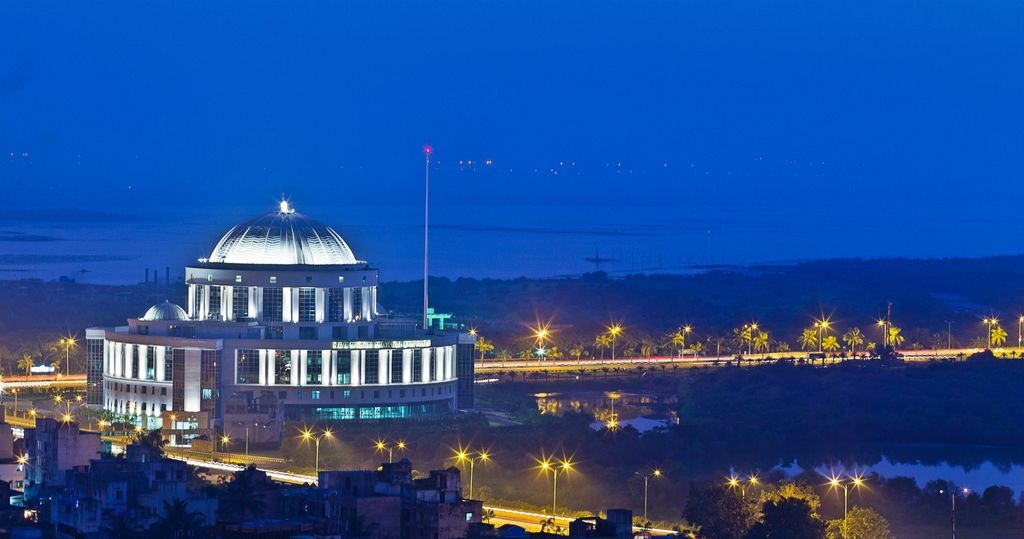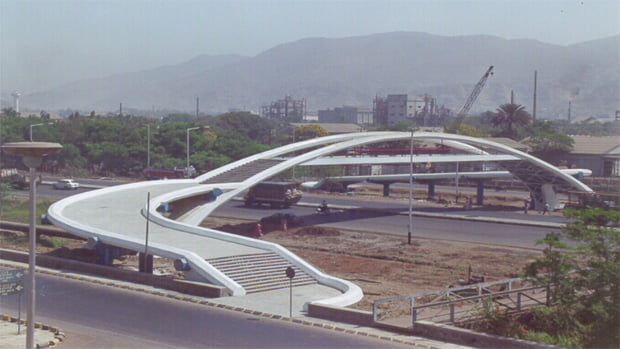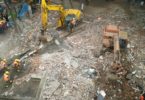Are Navi Mumbai Urban Spaces Fulfill Charles Correa’s Dream? Charles Correa, who passed aw ay on Tuesday, had said in an article that cities should have an ‘urban image’–an easily recognizable skyline that defines it. Mumbai, for instance, has the Marine Drive, with its array of Art Deco buildings and the mass of skyscrapers of Nariman Point and Malabar Hill at the peripheries. New York’s image is defined by the towers of Manhattan. London has added a new set of landmarks like The Shard and the building nicknamed The Gherkin.
Navi Mumbai – Architect Charles Correa’s One Of Dream

NMMC New Head Office With Green Building Architecture
Charles Correa, one of India’s greatest contemporary architects, was part of the team which created a blueprint for a new city across Mumbai harbor. The large area of the new city (Navi Mumbai) – 344 square kms, almost two-thirds of Mumbai’s size, gave architects and urban planners a vast canvas to fill with their work. Thus create an ‘urban image’ for the city. But Navi Mumbai has turned out to be an aesthetic architect’s nightmare.
Almost five decades after, the master plans of navi Mumbai were made to build a new city. There is not a single building or project that defines it. Le Corbuisier’s Chandigarh, built in the 1950s, is often criticized for its ‘Soulless City’ and ‘Cardboard Box’ buildings, but it has created easily recognized landmarks like the Secretariat and High Court buildings.
In contrast, Navi Mumbai, which has an area t hat is three times as large as Chandigarh, does not have a single distinguishable urban feature. Navi Mumbai ‘s ‘ urban image’ consists of rows of featureless buildings that seem to be put together with multicolored toy building blocks.
Correa, who was involved in the city’s planning, was, according to reports, not happy with the way the new city turned out to be. The only award-winner building that has been created in Navi Mumbai, Is the pedestrian bridge that crosses the busy Thane-Belapur Road near Juinagar station.

National Award (Aesthetics) from IIBE – 1997 & Innovative Design of Structure Award from ACCE SIMPLEX – 1999
The vast railway station buildings of the city are often touted as landmarks, but were these buildings were to be pulled down, Replaced with another structure would the city lose anything of architectural value?
The Navi Mumbai recently inaugurated a new building that houses its municipal corporation, and though the structure has been declared ‘green’ for some energy saving features the building can hardly aspire to be a future landmark.
Navi Mumbai is also grappling with other issues such as shortage of parking shortage and traffic congestion. Architect Chetan Raikar, who has been involved in the conservation of historic buildings like Haji Ali and the Chhatrapati Shivaji Terminus.
Shifted his office from Vashi’s Sector 17, the business hub of the city, to Sanpada, one kilometre away, because he was tired of the traffic and parking problems there.
“The roads, especially the inner lanes, were not planned for the traffic that now passes through them,” he said.
“Unlike the Gujarat government, which created Gandhinagar and moved its administrative apparatus to the new city, Maharashtra has not supported Navi Mumbai by shifting its government to the place,” said Raikar.
But the city has been a success in other ways. A survey in 2010 showed that one out of every three families staying there has shifted from Mumbai’s island city. The percentage of such families has increased from 11% in 2000 and 30% in 2005.
South Mumbai has lost population, as indicated by the censuses in 2001 and 2011. Another 20% of the city’s residents are from Mumbai’s suburbs. Also, 6% of Navi Mumbai residents formerly stayed in the Thane-Kalyan area.
You may also like to know more about Mumbai,
- New Wing of Mumbai City Museum Design by Steven Holl
- Namaste Tower – Economic and Cultural significance of Mumbai, India
- Give a Try…..70 Best Places to Eat in Mumbai, whenever you are in Mumbai
- Unknown Things About Taj Hotel Mumbai
- Enjoy Your Day With Mumbai – Day Trip In Mumbai
So Navi Mumbai is fulfilling its original purpose of de-congesting Mumbai, even if the process is slow. The new city’s population has grown slower than what was envisaged: its current population is estimated to be around 25 Lakhs – a third less than planned.







Leave a Comment
You must be logged in to post a comment.